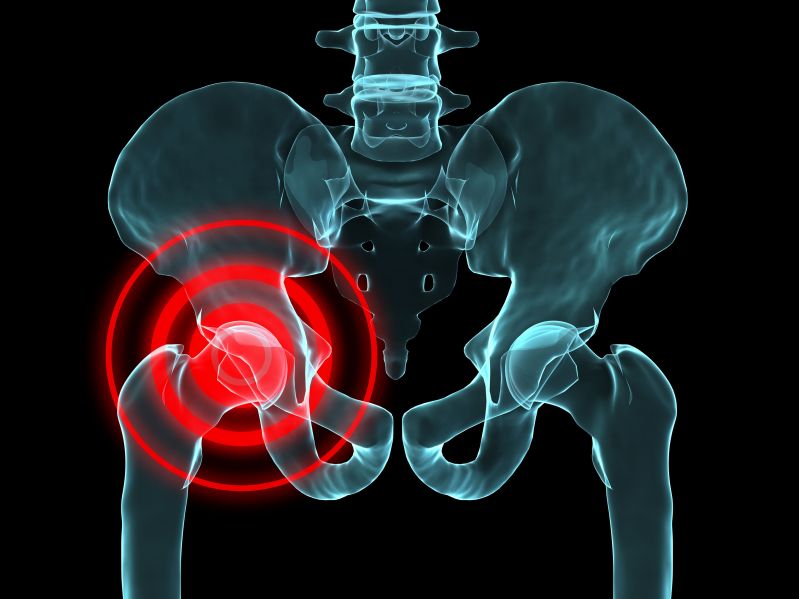The Difference between Tendonitis and Osteoarthritis of the Hip

Addressing Symptoms of Hip Pain
If you’ve suffered from hip pain, you’ll know that simply moving can intensify the discomfort. As a result, hip pain can cause people to refrain from any activity. Depending on the cause of the pain, lack of activity could actually worsen the condition. Both tendinitis and osteoarthritis (OA) can cause a variety of painful symptoms in the hip such as tenderness, swelling, loss of motion and weakness.
Though some of the symptoms may be similar, tendinitis and OA have different causes and presentations when diagnosed by a medical professional. The treatment will vary depending on the diagnosis. If left untreated, the condition can devolve into chronic, functionally limiting pain.
Tendinitis
Muscles are elastic in nature and produce the force needed to move the different body parts. Muscles are attached to bones at both ends by tendons. The tendon has leather like consistency. Therefore, when the elastic muscle contracts and pulls towards the center, the fixed end remains stationary and the other end moves.
When the muscle “pulls” on the tendon excessively due to overuse, trauma, or an anatomical abnormality, the tendon can be damaged. Tendinitis is a “breakdown” of the individual tendon cells. When observed under a microscope, the damage or “microtears” look similar to a fraying rope.
The damage to the tendon causes pain when the joint is moved actively or stretched passively. In severe cases, the pain can be sharp, functionally limiting, present 100% of the time.
Tendinitis can occur in any muscle/tendon combination; therefore, the pain in the hip can be located almost anywhere. This condition can be treated successfully by a Physical Therapist. The therapist will use various hands-on techniques and modalities to reduce the inflammation (the root cause of the pain) and educate you with a series of exercises that will promote healing by increasing blood flow to the injured area. The Physical Therapist will guide you with numerous exercises and activities, which will begin the process of restoring normal strength and motion in the involved hip.
Osteoarthritis (OA)
Osteoarthritis or Degenerative Joint Disease (DJD) or Arthritis are terms used to describe and diagnose a common condition found mostly in people over the age of 40, but it can occur at any age for various reasons.
 OA is a “breakdown” or “wearing away” of the smooth articular cartilage (Hyaline Cartilage on the end of the bones). When healthy, the smooth, articular cartilage surfaces glide upon themselves with very little friction. When OA is present, the articular cartilage becomes rough, and the amount of friction that occurs when the two surfaces move together rises dramatically.
OA is a “breakdown” or “wearing away” of the smooth articular cartilage (Hyaline Cartilage on the end of the bones). When healthy, the smooth, articular cartilage surfaces glide upon themselves with very little friction. When OA is present, the articular cartilage becomes rough, and the amount of friction that occurs when the two surfaces move together rises dramatically.
In the hip, there is a deep socket (Acetabulum) in a part of the pelvis and a round ball at the top of the thighbone (Femur). The round ball fits tightly into the socket and allows motion that is very stable due to the depth of the socket. The hip joint is subjected to tremendous forces when we perform weight-bearing activities. Overuse, injury or anatomical abnormalities can all cause the development of OA. In most cases, the development of this condition is gradual, and the onset of symptoms follow the same timeline. As the condition worsens, there is a change in the shape of the involved bones and pain (usually felt in the groin area), decreased motion and strength occur. Unfortunately, these changes are irreversible.
Physical Therapists can help to reduce the symptoms of OA. They use various hands-on- techniques to help facilitate motion, which in turn helps to lubricate the joint. They teach you how to exercise properly to restore the strength and as much motion as possible. Most importantly, a Physical Therapist will help to educate you on the different ways to prevent more damage to the joint by changing the way you do certain activities.
Tendinitis and OA cause pain in the hip. Tendinitis pain can occur anywhere, and OA pain is usually present in the groin area. Physical Therapists can help you reduce or prevent progression of the symptoms associated with either of these debilitating conditions. They will educate you on ways to remain active and healthy!
























